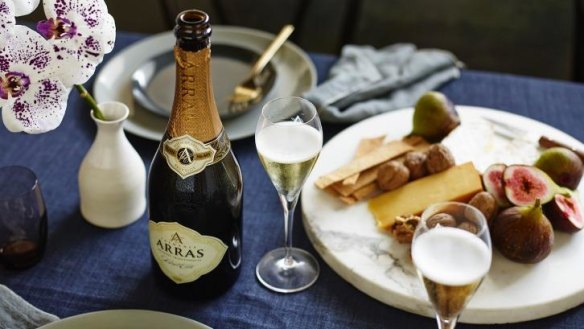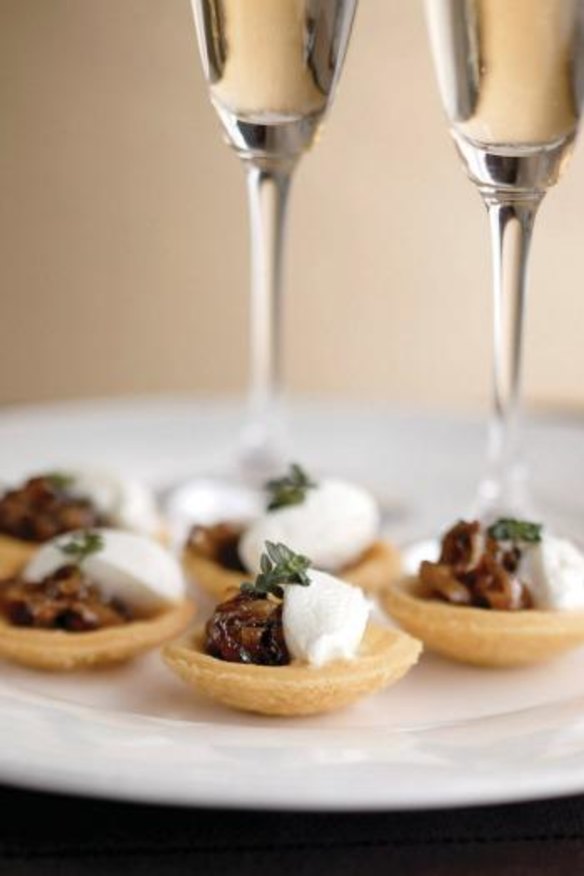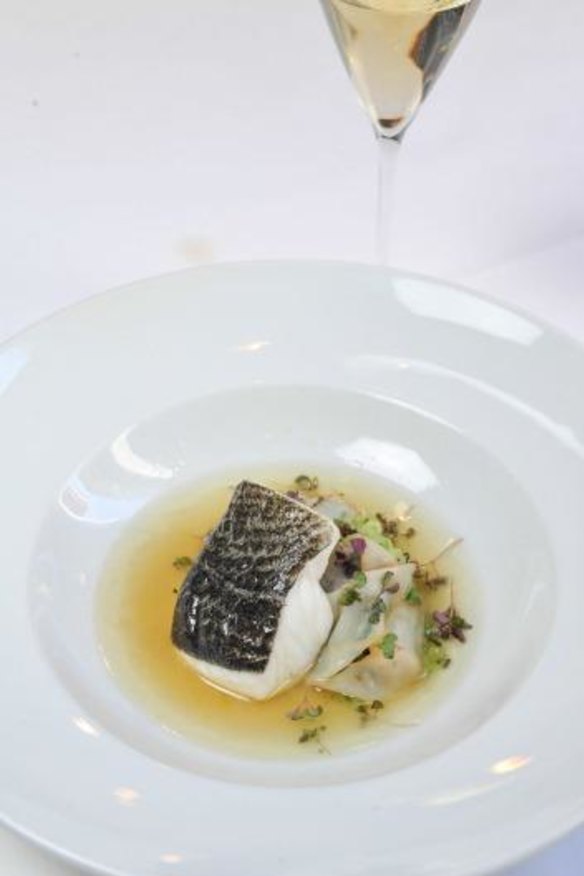Sparkling ways to pair champagne with food

It's fizzy, bubbly and fun, but don't be deceived, champagne is not so dainty.
Bubbly expert The Champagne Dame, aka Kyla Kirkpatrick, enjoys a flute from champagne breakfasts through to supper, and believes that "champagne comes alive with food".
"I think people try and put it in a box and I don't think that's necessary. What most people don't realise is that champagne is actually far more versatile as a food wine than any other wines," she says.
Kirkpatrick recently teamed up with Melbourne's Vue de Monde restaurant for a five-course champagne degustation. Chef Corey Campbell and Kirkpatrick paired champagne with strong ingredients including wagyu, emu egg, truffle, duck and marzipan.

When planning a menu, Kirkpatrick suggests starting with something accessible, such as a brut champagne with a touch of sweetness, before moving on to richer styles.
Here are some tips for playing with food pairings across the sparkling wine spectrum, and incorporating champagne throughout the course of a meal.
GENERAL TIPS

Sparkling wines come in many styles with varying dosage (sugar levels). You can select a champagne house's signature non-vintage blend for consistency, or experiment with one-off vintage styles, each with a unique flavour profile.
As with your cooking, remember to keep things balanced. Moet & Chandon cellarmaster Benoit Gouez says champagne can be matched with food as long as some thought is exercised.
"Champagne doesn't like excesses. So if it's too sweet, too acidic, too bitter, too spicy, too hot, whatever, it doesn't work," he says.
Kirkpatrick says it's important to keep in mind body and weight: "You don't want a dish that's going to overpower your champagne either in weight, on the palate, or the intensity of the flavour," she says.
Gouez says that saltiness is the taste sensation missing from champagne's flavour profile and can be counter-balanced by salt in a dish. "If you want to fine-tune a match with champagne, you have to play with salt. Salinity has a great impact on champagne."
He adds that champagne asks for texture and insists that "you should have in any dish, an element of crunchiness that will equal the effervescence".
CANAPES AND ENTREES: Keep it classic
Gouez nominates champagne and oysters as his favourite canapé coupling. Classic matches are often served at the start of an evening, such as sushi, sashimi, fresh salads, scallops and light white fish. "Everything that would be clean, pure, fresh, light," says Gouez.
He says snappy crudités add crunch. "The easiest is to have it with some fresh vegetables, carrot, cucumber - something fresh, crunchy, with maybe a salted dip."
MAINS: Matches you may not have considered
Kirkpatrick says champagne cuts through oily foods. "I do love rosé champagne with yum cha - and especially duck. What happens when you eat oily food, whether it's fish, duck, or some type of meat, it leaves a texture, a greasiness on your tongue, and what's beautiful about the champagne - which is quite acidic - is it actually cleans that oiliness off and lets you carry on with the next mouthful".
So can you go low-brow and serve champagne with fried chicken? Absolutely, according to award-winning Australian winemaker Ed Carr. "That fat and salt comes up as a constant theme. Sparkling wine does a remarkable job balancing off those and exposing the other flavours underneath."
Curries can also work alongside sparkling wine. When matching champagne with a curry, keep a handle on the chilli component. "Some say the spicier the better, but I think there's limits to that," Carr warns.
Kirkpatrick says demi-sec, a sweeter style, is another versatile option. "Demi-sec champagne can partner not only with dessert and sweeter dishes, but also with some spicy foods and some quite flavoursome foods like Asian and Indian."
You can afford to be more adventurous when serving vintage champagne. "To keep it simple, you're going to have more body and you're going to have richer aromas and you're going to have more weight from a vintage champagne," Kirkpatrick says. "Vintage champagne will hold up better with a heavier dish, a more substantial dish, whether that's a duck, or a beef, or a beautiful cut of salmon or [other] fish".
Tasmania's House of Arras specialises in vintage drops, which develop "epicurean" characters after being aged on yeast. Carr says flavour profiles can include brioche, mushroom, toast, Vegemite, nougat and "other nutty sort of characters".
Both Carr and Gouez suggest serving vintage champagne with earthy, gamey mains to bring out "forest floor" characters. For example, truffle risotto, duck, venison and even beef. Carr also recommends pairing vintage bubbles with full-bodied cheese such as parmesan and cheddar.
Gouez recommends serving meat rare. "Champagne asks for the ingredients to be raw or slightly undercooked, in order to keep a juicy texture. If a meat or a fish is too cooked, the dryness of the ingredient will make the champagne taste harsh," Gouez says.
DESSERTS: Not always pink
Often sparking rosé is matched with dessert, and a flute of blush pink bubbles is a fixture of many afternoon tea sessions. However, Gouez challenges the assumption that rosé should be matched with sweet dishes.
"The association is always that 'OK rosé is pink, being pink it's more fruity, being more fruity it's sweeter'. That's nothing to do with it - it can be pink and very, very dry."
Instead, Gouez insists that rosé champagne asks for colour. "I often think of an Italian style of cuisine to go with rosé. To me, salads, carpaccio, tartares, salmon - it's not just Italian, but things with colours, with fruitiness and intensity, sort of a spring/summer feeling."
However, Carr believes "adaptable" rosé can work alongside sweet and savoury dishes with an element of fruitiness. "I've seen it matched with sweet, Thai sort of curries, to ... rhubarb and apple desserts".
Gouez is firm when considering a dessert match: "Forget it - unless you go for sweet champagne. In my opinion, sweet asks for sweet."
The Champagne Dame's dinner party pairing suggestions
Blanc de blanc: Light seafood entree, eg. seared scallops
Brut or vintage: Main course, eg. beef or duck
Rosé: Main course (dry) or dessert (sweet)
Demi-sec: Petits fours, macarons
Rosé: cheese course with rosé red jam (made with leftover champagne), or champagne with comte cheese.
The best recipes from Australia's leading chefs straight to your inbox.
Sign up